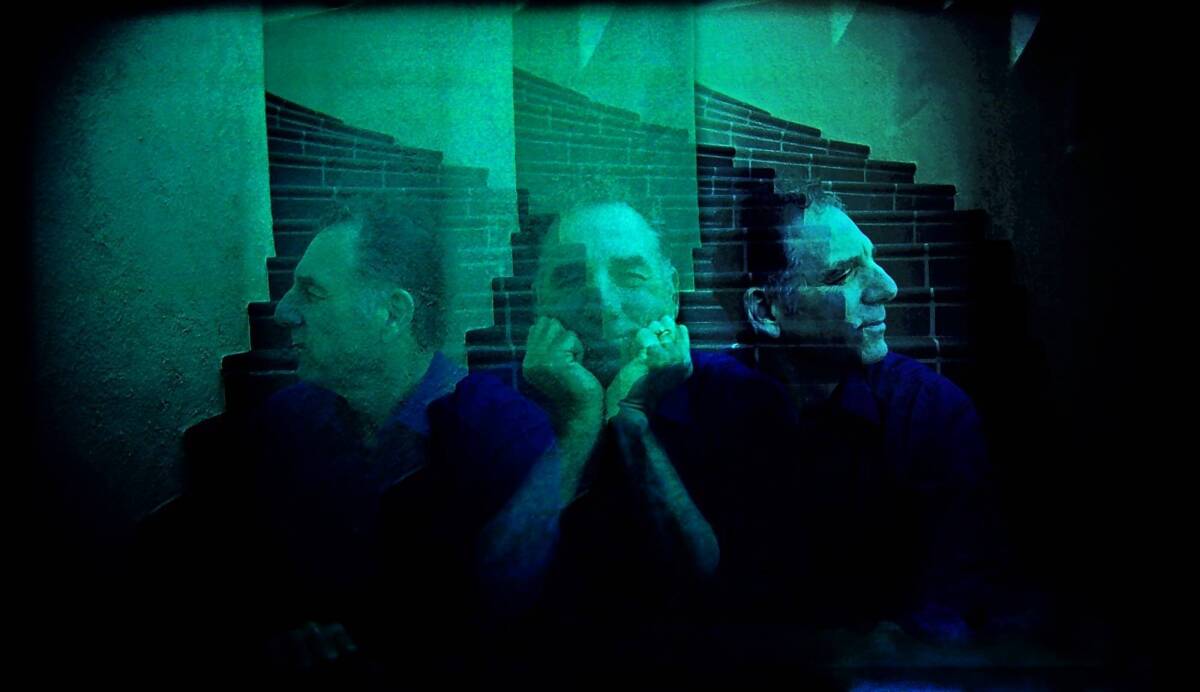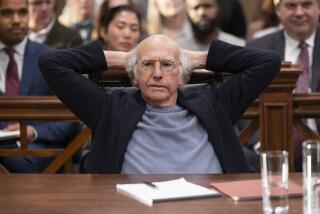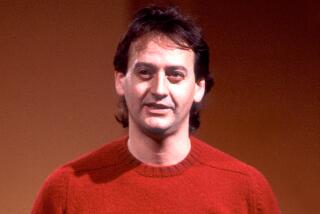Michael Richards goes for a drive

FOR THE RECORD:
Michael Richards: The Sunday Conversation with actor Michael Richards in the Dec. 1 Calendar section misidentified his wife as Ann Talman. He is married to Beth Skipp. Talman is an ex-girlfriend. —
Three-time Emmy winner and “Seinfeld” star Michael Richards talks about his return to network television as eccentric chauffeur Frank Baxter in TV Land’s “Kirstie” (premiering Wednesday), his first series since his infamous N-word rant at a black heckler at the Laugh Factory in 2006.
Tell me about your character. What kind of input did you have in shaping him?
Everything I suggested came into the script. I wanted to bring him certain character touches, like I wanted the character to be on medicinal marijuana.
Why was that? Because it’s a fact of life in California?
It’s all over the country. A big cultural movement taking place. And I just thought he should be on medicinal marijuana on his time off. I didn’t want to have him drinking. Kirstie’s character drinks.
PHOTOS: Behind the scenes of movies and TV
Well, your character drives.
He doesn’t use it while he’s driving or on the job. We did do an episode where it’s a comedy of errors and he had to drive. Something came up as an emergency. I wanted to handle it as carefully as possible, so that he’s mindful of the use of this stuff.
Had you been going after parts or did you decide that now was the right time to attempt a comeback?
Well, I wasn’t attempting a comeback. Like, “I’ve got to get back” is not my style. I did step away from show business for years. I wasn’t even living in Los Angeles. I was living in Connecticut, and we had a place in New York. My wife [Ann Talman] was going to school there, and I studied for years photography. I was hanging out with accomplished photographers and going out daily, probably minimally two hours a day. I did this for a number of years. I had a small studio and an assistant and I collect my work. And I was taking photography very, very seriously. I didn’t have my mind on show business at all.
Do you show your work?
No, I always felt like I wanted to put in a lot of years before I had my first show. I just felt it was impertinent to have a show after a year, a year and a half.
PHOTOS: Celebrities by The Times
When did you decide to go back into show business?
We moved back to Los Angeles — I’ve been with this gal for 11 years and we got married three years ago, and I have a 2-year-old son. My agent in New York suggested I hook up with the agency [Abrams] here.
I went on two auditions before “Kirstie” within the four months that I was here. And I was terrible. I didn’t feel connected to the material through the format of auditioning, sitting in a chair with everybody looking at me. I thought it went badly. And this “Kirstie” project came up. They wanted me to read, so when I went in, I was determined to make up for the last.... I didn’t care if I even got the part. All I was focused on was doing an audition where I could walk away and say, “That was fine.”
I want to talk to you about the aftermath of the Laugh Factory event. A few days afterward, you apologized on “David Letterman” to everyone who took “the brunt of that anger and hate and rage.” Did you figure out where that came from?
Yeah, anger. When it gets the best of you, for me, as it was displayed, oh, my goodness, I said a lot of stupid things, didn’t I? So to be caught up in anger is not a good thing.
Did people avoid you after that?
I avoided people. I moved out of Los Angeles and lived in Mexico for a little while before I went to live in New York. I didn’t expect anyone in Hollywood to hire me, and I didn’t feel I was in any condition to perform. The business wasn’t with me really before the incident, which was one of the reasons I went into the club environment, to build my own project.
Do you think you were typecast?
Possibly. That Kramer character was huge, and I think a lot of people didn’t know where you go after that. I never had anyone tell me that, but I noticed that after “Seinfeld” I didn’t really get much. And then I did a show called “The Michael Richards Show” [in 2000], which didn’t do very well. I think we did seven episodes and then I signaled to NBC that I really wanted to end this. And I just left show business then. I wasn’t concerned about career after that club incident. I was more concerned with understanding myself. That to me was the part to be played now. I didn’t need an audience or a public. I didn’t need awards or agents or contracts and lawyers.
I read that you went to Cambodia for spiritual healing.
I hooked up with a group that was touring temples that I knew about in Los Angeles, but I wasn’t really a follower. At the time I was and still am very interested in architecture. And the orientation of temples fascinates me, the kind of mathematical know-how that went into those temples. And it does have spiritual significance. I was up for dealing with the nature of anger, and in myself I’m looking at collective anger, what constitutes the nature of war and striking out against other people because they’re not liked or should be punished. I was a miniature of that.
So I rolled up my sleeves and spent some time looking at the nature of anger, and watching it very, very closely. What kinds of things throughout the day bothered me? I was stepping back and just watching myself, and I still do that. It’s my way of taking note of this creature that I am. I learned to watch or even create the behavior for a character as an actor. So the tools for the work I did in becoming familiar with a text, a play, a character and so forth were applied to myself. That event at the club sent me off on a quest.
More to Read
The complete guide to home viewing
Get Screen Gab for everything about the TV shows and streaming movies everyone’s talking about.
You may occasionally receive promotional content from the Los Angeles Times.






